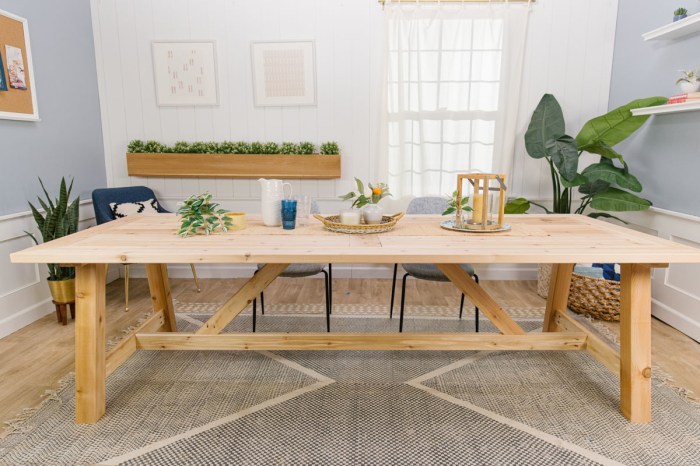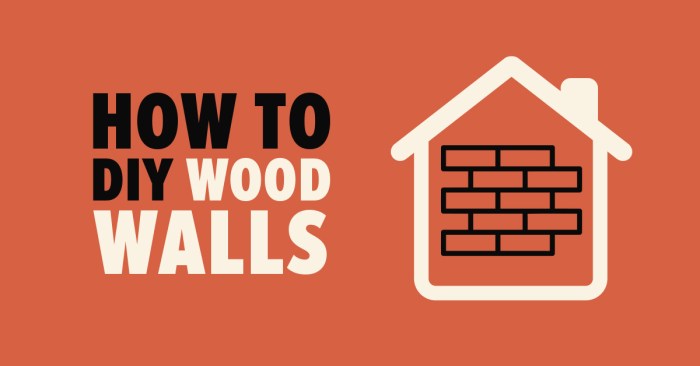DIY wood walls have become increasingly popular, offering a unique way to add warmth, character, and a touch of rustic charm to any room. Whether you’re looking to create a cozy retreat or a modern statement, wood walls provide a versatile backdrop for your design vision.
Wood is a natural material that brings a sense of warmth and authenticity to a space. It’s durable, easy to work with, and can be stained or painted to match any decor. Plus, wood walls can help improve your home’s insulation and soundproofing, making it a practical and aesthetically pleasing choice.
Introduction to DIY Wood Walls

Transform your home with the timeless elegance and natural warmth of DIY wood walls. Wood walls offer a unique blend of beauty, durability, and functionality, making them a popular choice for homeowners looking to enhance their living spaces.
Wood’s inherent charm adds character and depth to any room, while its natural insulating properties help regulate temperature and reduce noise levels. Beyond aesthetics, wood walls are incredibly versatile, offering a wide range of styles and finishes to suit any design preference.
Different Wood Wall Styles
Wood walls can be incorporated into your home in a variety of ways, each with its own distinct look and feel.
- Shiplap: This classic style features narrow, overlapping planks that create a clean, horizontal pattern. Shiplap walls are often used to create a farmhouse or coastal aesthetic, but they can also be incorporated into more modern spaces.
- Plank: Plank walls use wider, more substantial boards, resulting in a rustic and substantial appearance. This style is well-suited for creating a cozy and inviting atmosphere in living rooms, bedrooms, or dining areas.
- Accent Walls: Accent walls are a great way to add a pop of personality and visual interest to a room. They can be created using any of the above styles, but they are often used to highlight a specific area, such as a fireplace or a headboard.
Planning Your DIY Wood Wall Project

Planning is crucial for any DIY project, especially when working with wood. A well-planned project ensures you have the right materials, tools, and design to create a beautiful and functional wood wall. This section will guide you through the essential steps to plan your DIY wood wall project effectively.
Budgeting for Your Project
The budget is a key factor in determining the scope and materials for your project. Before you start buying materials, it’s essential to set a realistic budget. Here are some factors to consider:
- Type of wood: Different wood types have varying costs. For example, reclaimed wood is often more expensive than new lumber, but it can add character and sustainability to your project.
- Quantity of wood: The amount of wood you need will depend on the size of your wall and the design you choose. Calculate the area you need to cover and factor in any waste or additional pieces for patterns.
- Tools and supplies: You’ll need various tools and supplies, such as a saw, drill, screws, and wood glue. Factor in the cost of these items in your budget.
- Finishing materials: Consider the cost of paint, stain, or other finishing materials to achieve the desired look for your wood wall.
Choosing Materials for Your Wood Wall
The type of wood you choose will significantly impact the look, feel, and durability of your wall. Here are some factors to consider when choosing materials:
- Wood type: Popular choices include pine, oak, cedar, and reclaimed wood. Each wood type has its unique characteristics, such as color, grain pattern, and durability.
- Wood thickness: The thickness of the wood will affect the weight and strength of your wall. Thicker wood is generally more expensive but provides greater stability.
- Wood finish: Consider the desired look and feel for your wood wall. You can choose to leave the wood natural, paint it, or stain it to match your décor.
Gathering Tools and Supplies
You’ll need various tools and supplies to complete your DIY wood wall project. Here is a list of essential items:
- Measuring tape: Accurately measure the wall area to determine the amount of wood you need.
- Level: Ensure the wood planks are installed straight and level.
- Saw: Cut the wood planks to the desired size. You can use a circular saw, jigsaw, or handsaw depending on your needs and preferences.
- Drill: Create pilot holes and secure the wood planks to the wall.
- Screws: Secure the wood planks to the wall.
- Wood glue: Create a strong bond between the wood planks and the wall.
- Safety gear: Wear safety glasses, gloves, and a dust mask to protect yourself while working.
Designing Your Wood Wall
The design of your wood wall is a personal choice that should reflect your style and preferences. Here are some factors to consider:
- Pattern: You can create various patterns with the wood planks, such as horizontal, vertical, herringbone, or chevron.
- Spacing: The spacing between the wood planks will affect the overall look of the wall. Experiment with different spacing options to find what you like best.
- Color: Consider the existing color scheme of your room and choose a wood color that complements it.
Measuring and Preparing the Wall
Before installing the wood planks, you need to measure and prepare the wall surface. Here’s how:
- Measure the wall: Use a measuring tape to determine the width and height of the wall area you want to cover with wood planks.
- Clean the wall: Remove any dust, dirt, or debris from the wall surface. This ensures a smooth and secure installation.
- Mark the wall: Use a pencil to mark the placement of the wood planks on the wall. This will help you ensure a straight and even installation.
Choosing the Right Wood

Choosing the right wood for your DIY wood wall is crucial for achieving the desired look and ensuring durability. The type of wood you select will impact everything from the final aesthetic to the overall cost of your project.
Types of Wood for DIY Wood Walls
Here’s a breakdown of common wood types used for DIY wood walls, along with their pros and cons:
- Reclaimed Wood: Reclaimed wood offers a unique rustic charm and eco-friendly appeal. It’s often sourced from old barns, sheds, or other structures, giving it a weathered and timeworn look.
- Pros: Unique character, environmentally friendly, often affordable.
- Cons: Can be inconsistent in size and thickness, may contain imperfections or insect damage, requires cleaning and preparation.
- Plywood: Plywood is a versatile and affordable option for DIY wood walls. It’s made from thin layers of wood veneer glued together, creating a stable and strong panel.
- Pros: Consistent thickness and size, easy to work with, relatively inexpensive.
- Cons: May have a less natural look compared to solid wood, can be prone to warping if not properly sealed.
- Solid Wood: Solid wood provides a classic and elegant look for DIY wood walls. It comes in various species, each with its own unique grain patterns and characteristics.
- Pros: Natural beauty, durable, can be stained or painted to match your décor.
- Cons: Can be expensive, requires careful handling to avoid warping or cracking, may need specialized tools for cutting and finishing.
Selecting Wood Based on Budget, Style, and Finish
When choosing wood for your DIY wood wall, consider the following factors:
- Budget: Reclaimed wood and plywood are generally more affordable than solid wood. However, the cost of reclaimed wood can vary depending on its condition and source.
- Style: The desired style of your DIY wood wall will influence the type of wood you choose. For a rustic look, reclaimed wood or knotty pine are excellent options. For a modern aesthetic, consider smooth-grain woods like maple or birch.
- Finish: The finish you plan to apply will also affect your wood selection. For a natural look, consider a clear sealant or stain. For a more vibrant look, paint the wood with your desired color.
From planning and choosing the right wood to installing and finishing, this guide provides a comprehensive overview of the DIY wood wall process. With a little time, effort, and the right tools, you can transform your walls into a stunning focal point that reflects your personal style and enhances the overall ambiance of your home.
Creating a DIY wood wall is a great way to add character and warmth to your space. You can find inspiration from various sources, like the amazing DIY projects featured on diy pete , which showcase unique and creative ideas. With a little planning and some basic woodworking skills, you can easily transform your walls into a stunning focal point.
